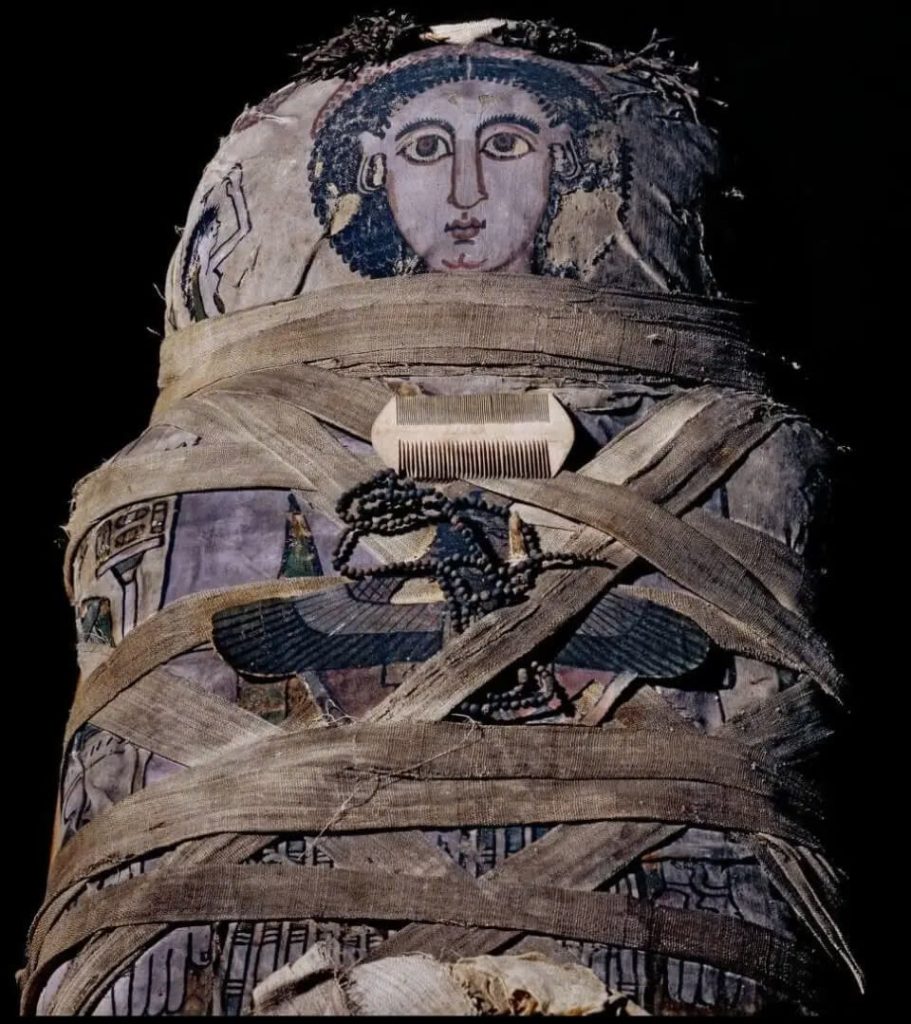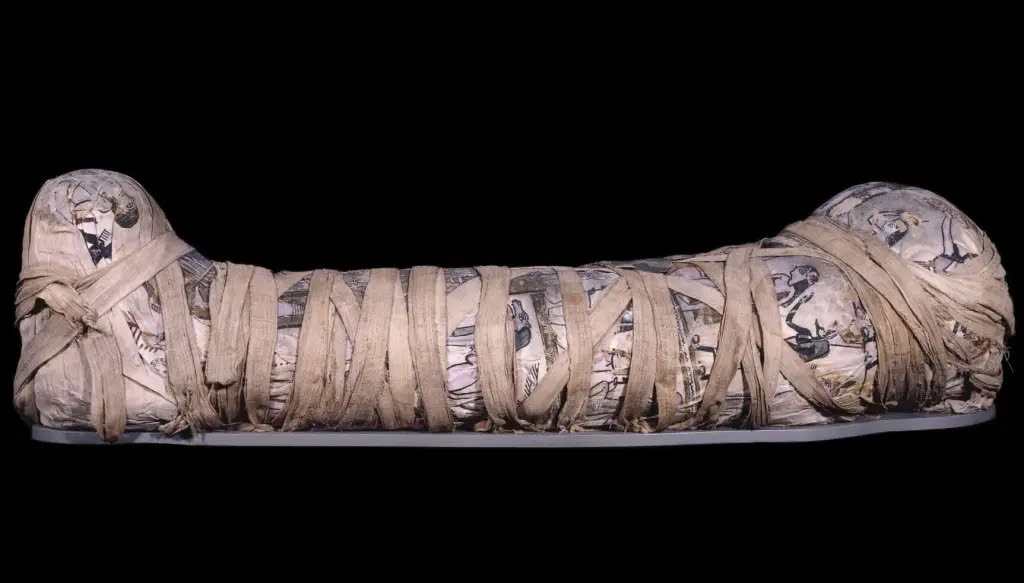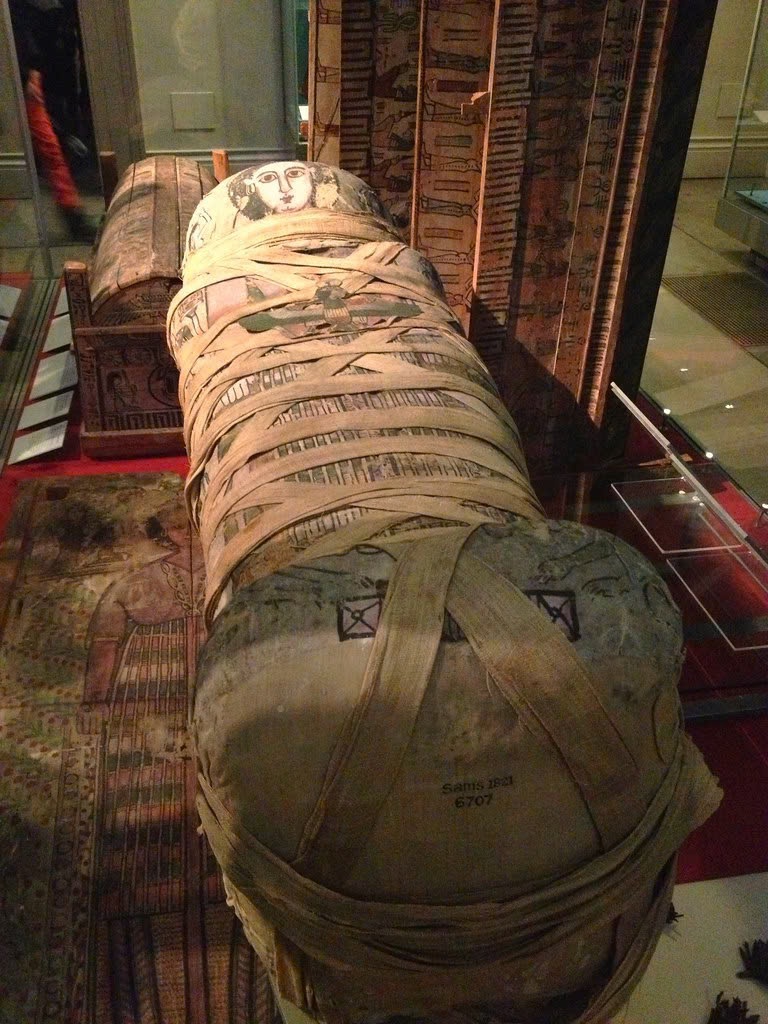Within the hallowed halls of the British Museum lies an extraordinary relic of ancient Egypt—a mummy that continues to intrigue historians, archaeologists, and casual visitors alike. This is not the famed Cleopatra VII, the queen immortalized in countless tales of love and power, but a young woman who shares the same storied name. This Cleopatra, who lived during the Roman Period of Egypt around 100-120 CE, was just 17 years old when her life came to an untimely end.
A Glimpse into Noble Heritage
The inscriptions on her mummy reveal Cleopatra’s esteemed lineage. She was the daughter of Candace, a woman linked to the prominent Cornelius Pollius family. Her father, a man of considerable influence, served as the Archon of Thebes, a title that underscored his standing during Emperor Trajan’s reign. To hold such a position during one of Rome’s most celebrated periods signified the family’s remarkable status, firmly placing Cleopatra within the elite strata of ancient Egyptian society.

A Tragic End to a Promising Life
Cleopatra’s death came abruptly and tragically, cutting short a life that had barely begun. She passed away at the precise age of 17 years, 1 month, and 25 days. The exact cause of her demise remains an enduring mystery. In the ancient world, however, such youthful deaths were far from uncommon. The lack of advanced medical knowledge, coupled with the challenges of disease and childbirth, often robbed families of their young members before they could fully realize their potential.
Cultural Fusion in Life and Death
Cleopatra’s story serves as a powerful lens through which we can explore the cultural complexities of Roman-era Egypt. Though she bore a Greek name and lived under Roman rule, her burial rites reflected the deeply entrenched Egyptian traditions of her homeland. The linen wrappings of her mummy are adorned with depictions of revered Egyptian deities, including Isis, Nepthys, Anubis, and Nut. These intricate designs testify to the resilience of Egyptian spiritual beliefs, even as the region was shaped by Roman governance and Mediterranean cultural influences.
Offerings for the Afterlife
Cleopatra was interred with a poignant collection of personal belongings. Discovered in Sheikh Abd el-Qurna, Thebes, her burial site contained a string of berries, a garland or wreath, and a wooden comb. These humble yet touching items were intended to accompany her into the afterlife, serving as symbols of care and affection from those who buried her. They also offer a glimpse into the everyday objects valued by people in ancient Egypt, bridging the millennia between her time and ours.
Unlocking Ancient Secrets with Modern Science
The ongoing fascination with Cleopatra’s mummy owes much to the application of modern technology. Through X-ray analysis, researchers have been able to peer beneath the layers of linen, uncovering new insights about her physical condition and the mummification practices of her time.

The X-rays revealed several intriguing details about her remains:
- Dense material, likely plaster, obscures much of her body, indicating a sophisticated embalming technique.
- Her ribs, arms, and legs show no fractures, suggesting she did not suffer physical trauma before her death.
- A mysterious mass in her body cavity raises questions about her health and possible cause of death.
- Her arms are extended with her palms resting against her outer thighs, a position consistent with traditional mummification.
- Her left hip appears dislocated, likely a result of the tight bandaging process.
- Notably, there is no evidence of arrested growth, which implies that she developed normally for someone of her age.
These findings shed light on both the life and death of this young woman, offering tantalizing clues while leaving some questions unanswered. They also underscore the advanced techniques employed by ancient Egyptian embalmers, whose methods continue to astonish modern researchers.
A Lasting Legacy
Cataloged as EA6707 in the British Museum, Cleopatra’s mummy remains a centerpiece of the museum’s Egyptian collection. Her story, though rooted in the distant past, resonates deeply with contemporary audiences. It reminds us of the universality of human experiences—of loss, memory, and the enduring desire to honor loved ones. In her mummification and burial, we see not only the confluence of cultures during a transformative era in Egyptian history but also a testament to the timeless rituals that connect humanity across the ages.
Bridging Millennia
Cleopatra’s mummy is more than an artifact; it is a portal to a world that existed nearly two millennia ago. Her story illuminates the lives of those who lived in a society marked by both continuity and change. Ancient Egypt during the Roman Period was a place where traditional beliefs coexisted with new influences, creating a unique cultural tapestry. Cleopatra’s life and death exemplify this interplay, offering a narrative that is at once deeply personal and historically significant.

From her noble lineage to her untimely passing, Cleopatra’s brief existence was shaped by the forces of her time. Her mummified remains, preserved with care and reverence, serve as a silent witness to an era when the traditions of the past met the realities of a changing world. For modern visitors to the British Museum, her story provides not only a connection to the distant past but also an opportunity to reflect on the enduring nature of human dignity and the rituals that define us.
As we stand before Cleopatra’s mummy today, we are reminded of the shared humanity that binds us to those who lived long before us. Her story, told through inscriptions, artifacts, and scientific discoveries, continues to inspire curiosity and reverence. It is a testament to the power of archaeology to bridge the gap between ancient and modern worlds, revealing the stories that unite us across time.





